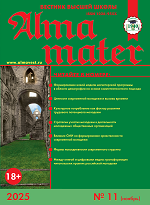The article reveals the concepts of statistical literacy, statistical culture and statistical thinking. Their practical significance, content, connection with each other and with other terms from the point of view of different authors are shown. It is revealed that these concepts are often considered separately, therefore there is no unity in definitions, their structure and interrelation. The purpose of the article is to consider the content and boundaries of the above concepts. Statistical literacy, statistical culture, and statistical thinking are considered as the three levels of a person's statistical education in a broad sense. Each subsequent level includes the content of the previous one. A brief description of each level of statistical education is given. The owner of the level has been determined, the person who can achieve it in everyday or professional activities. The knowledge requirements for each level of statistical education are described. The basic requirements for skills and abilities in the application of statistical methods in life or in the profession for each level are defined. Some additional characteristics of a person necessary to achieve each level of his statistical education are given. As a result, the level of a person’s achieved statistical education can be more clearly identified.
Keywords: statistical literacy, statistical culture, statistical thinking, statistical education
References
1. Adler, Yu.P., Shper, V.L. The origins of statistical thinking. Methods of quality management. 2003. No. 1. P. 34–40.
2. Golubenkov, A.A. On the issue of interpretation of the concept of ‘statistical culture’. Pedagogical sciences. 2011. No. 2 (47). P. 18–20.
3. Zhiglyaeva, A.V. Statistical literacy as a competitive advantage in a professional environment. Skif. Questions of student science. 2017. No. 8 (8). P. 188–191.
4. Zavrazhin, A.V., Karmanov, M.V. Problems of building a system of indicators of statistical literacy of the population. Law and education. 2019. No. 10. P. 78–86.
5. Karmanov, M.V. Klochkova, E.N. Statistical literacy as an important component of personnel training for the digital economy. Statistical issues. 2018. Vol. 25. No. 10. P. 78–83.
6. Medvedik, V. Probability and statistics — the gateway from school mathematics to life [Electronic resource]. URL: https://olimpiada.ru/article/1089 (accessed on: 01.05.2024).
7. Samarskaya, S.V. Philosophy of statistical thinking: users of social networks and interpersonal relations in the age of digitalization. Humanities and Social Sciences. 2021. No. 2. P. 56–62. DOI: 10.18522/2070-1403-2021-85-2-56-62.
8. Tarasova, S.A. Statistical literacy of a medical university student: the essence and structure. Azimuth of scientific research: pedagogy and psychology. 2019. Vol. 8. No. 2 (27). P. 248–250. DOI: 110.26140/anip-2019-0802-0056.
9. Chernova, Yu.K., Gushyan, Yu.G., Firsova, O.A. Formation of statistical culture in the process of research activity of the student design bureau “Quality”. Vector of Science of Tolyatti State University.2009. No. 4 (7). P. 83–90.
10. Chesalin, A.N., Grodzensky, S.Ya. From statistical thinking to intellectual thinking. Standards and quality. 2020. No. 10. P. 94–97.
11. Shper, V.L. Ekonomika Economics of Russia and statistical thinking. Methods of quality management. 2017. No. 6. P. 1.
12 McMaster, Je. Internship Project Statistical Literacy. Office for Statistics Regulation. 2023. 39 p.
13. 2023 Update on the indicator for statistical literacy [Electronic resource]. Paris 2023. URL: https://www.paris21.org/statistical-literacy-2023 (accessed on: 01.05.2024).
14. Runge, J., Hudson, N. Public Understanding of Economics and Economic Statistics. EScoE Occasional Paper, 3. 2020. 235 p.











.png)






